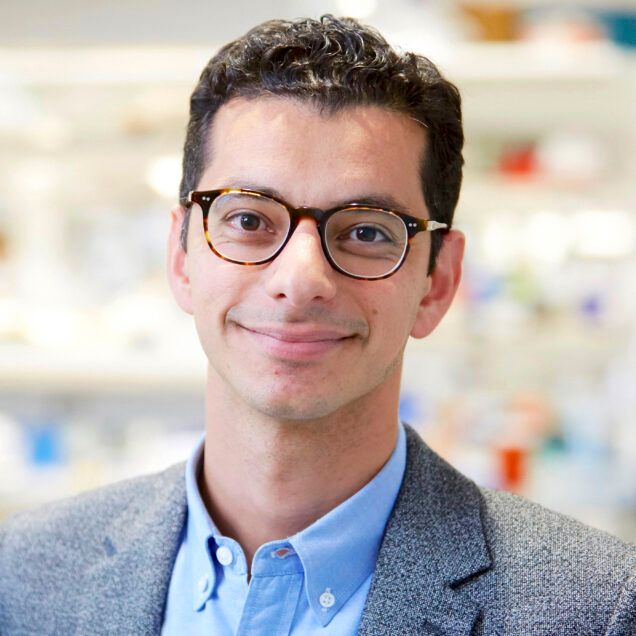Khalil and team discover and mimic a winning cellular strategy
By Patrick L. Kennedy
Professor Ahmad “Mo” Khalil (BME) and colleagues have developed a more precise and effective gene circuit engineering method that might boost the field of synthetic biology to the next level, ultimately resulting in more effective and enduring cell therapies for cancer and other diseases, among other applications.
The potential benefits of gene circuits are well established. Built of biological parts rather than silicon, a gene circuit makes use of cells’ innate regulatory abilities, which can be commandeered to instruct cells to carry out specified tasks. “Programming” cells in this way, Khalil and other researchers have begun paving the way for safer and more effective cellular therapies, as well as tissue and organ regeneration.
However, these methods face hurdles on the road to application and clinical adoption.

“We need the synthetic circuits that are being introduced into cellular hosts to be robust and stable,” says Khalil. “This can be a challenge. Synthetic circuits don’t live in a vacuum. When they are introduced into cells and organisms, they interact with host native machinery and pathways.” Often, this “cross-talk” mucks up the whole system, says Khalil, leading to mutations and gradual degradation of the circuits as the engineered cells stop replicating themselves over time.
In a study recently published in Cell, the team—which was co-led by a bioengineer at Rice University (Caleb Bashor) and researchers from Boston University (Meghan Bragdon and Nikit Patel) and includes a geneticist at Harvard Medical School and a mathematician at Dartmouth College—discovered a solution to this problem: a way to engineer “circuits that are more insulated from these negative cross-talk interactions and, thus, retain functional stability over long time scales,” says Khalil.
Their method investigates and synthetically mimics a way by which naturally occurring proteins are thought to regulate gene expression—a fundamental process that determines the formation of different cell types during development and produces different cellular behaviors. In particular, the team studied and made use of transcription factors (TFs), which are molecules that kick off the gene expression process. To make it happen, TFs must seek out and bind to specific regions of a cell’s genome. But researchers have been mystified as to how exactly TFs make those connections in just the right combination to turn the right genes on and off to drive the right behavior or cell type (for example, a white blood cell vs. a nerve cell).
Working in yeast cells, Khalil’s team discovered that TFs can pull off this trick with a strategy known as “cooperative assembly,” essentially pooling their resources. While an individual TF might not be specific or strong enough to find its target in the genome, when TFs assemble and work together they manage to bind to their target regions accurately, triggering gene expression.
Once the researchers understood this, they succeeded in engineering gene circuits that mimicked the cooperative assembly strategy, thereby overcoming the defects that have hampered gene circuits to date. The result is long-term functional stability in engineered cells. Although the team applied this fix to yeast, the same principles should work for a variety of applications.
“We expect that our strategy, which is entirely generalizable and simple,” says Khalil, “will be useful for biotechnology and medicine to create engineered cells whose functions are robust and stable over many generations.”
